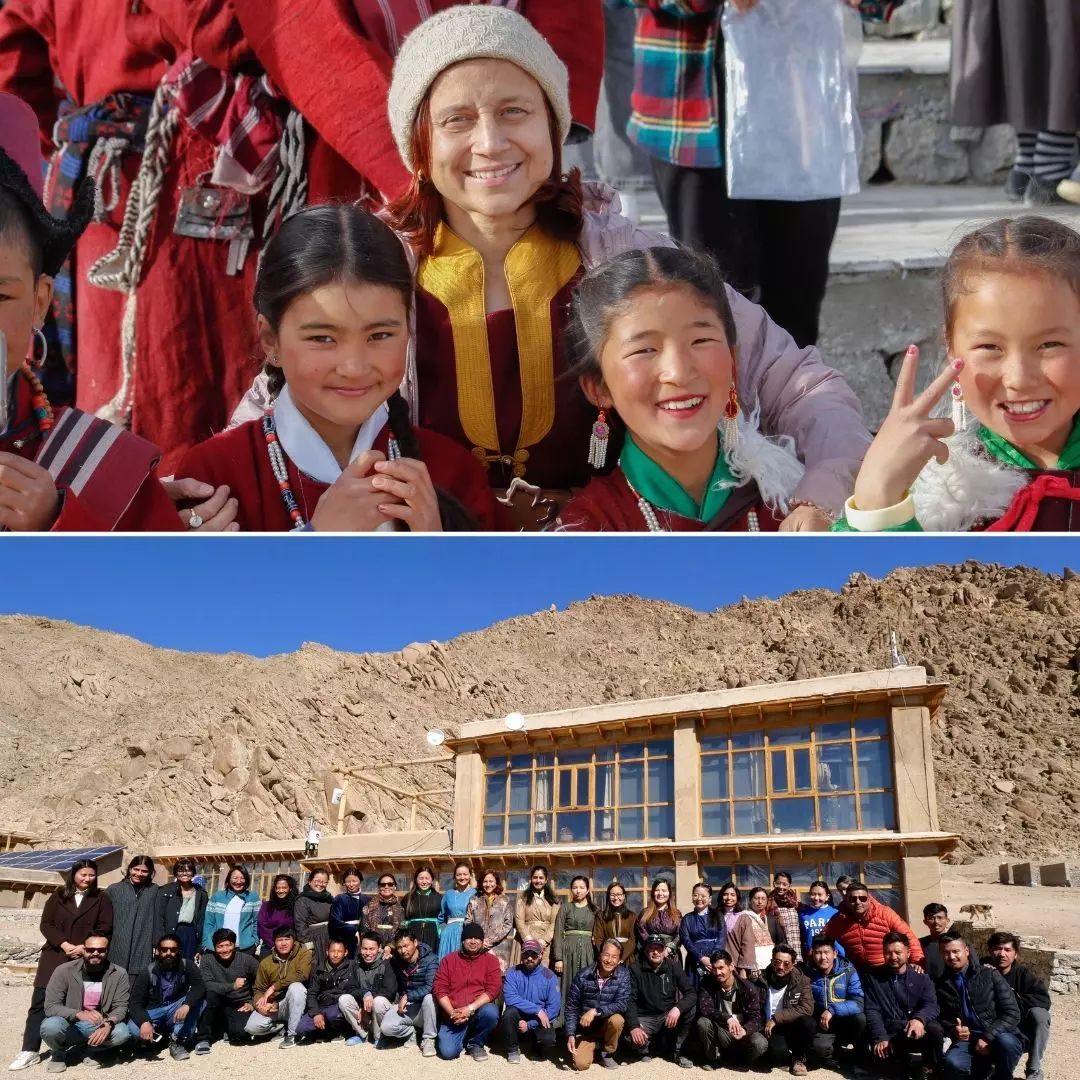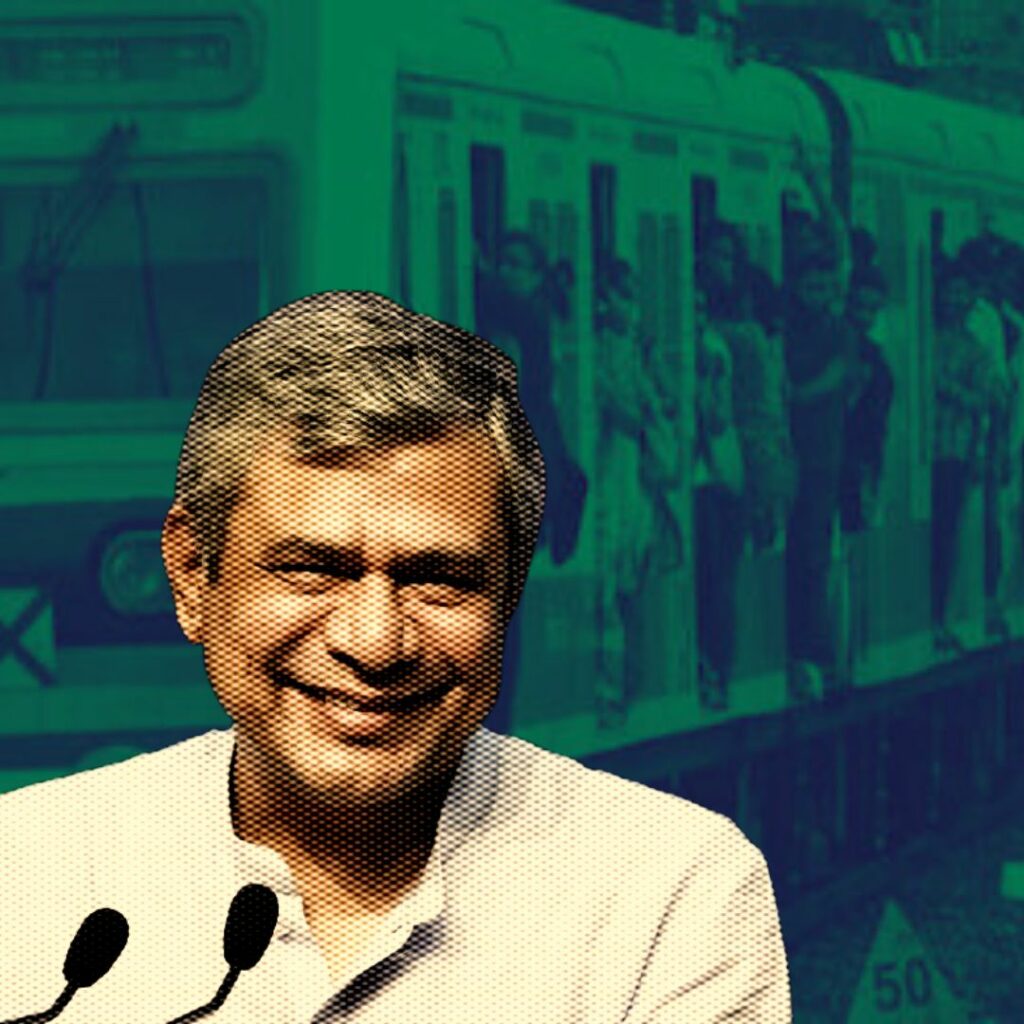Ladakh is known for its beautiful landscapes, picturesque mountains, ancient monasteries, vibrant culture, and unique traditions. It is also known for extreme weather conditions, including cold winters and hot summers, and limited access to resources due to its remote location. However, it is not often viewed as a land of abundant opportunities. This perception is largely due to the absence of resources or other facilitators typically not found in such locations.
Despite extreme and unique challenges, Gitanjali J Angmo, the Co-Founder, Director and CEO of the Himalayan Institute of Alternatives (HIAL), Ladakh, has set her sights on transforming the region. Once devoid of universities and higher education institutes, this space is now overflowing with aspiring young entrepreneurs. Thanks to Gitanjali’s unwavering determination and tireless work, the dream of a thriving Ladakhi community is becoming a reality.
Against all odds, Gitanjali has managed to build an institution that is truly remarkable in every way. HIAL is a place where students can learn not only from textbooks but also from the wisdom and traditions of the ancient Himalayan culture. It is a place where sustainable living practices are taught and practiced and where cutting-edge research is conducted on alternative energy, agriculture, and healthcare.
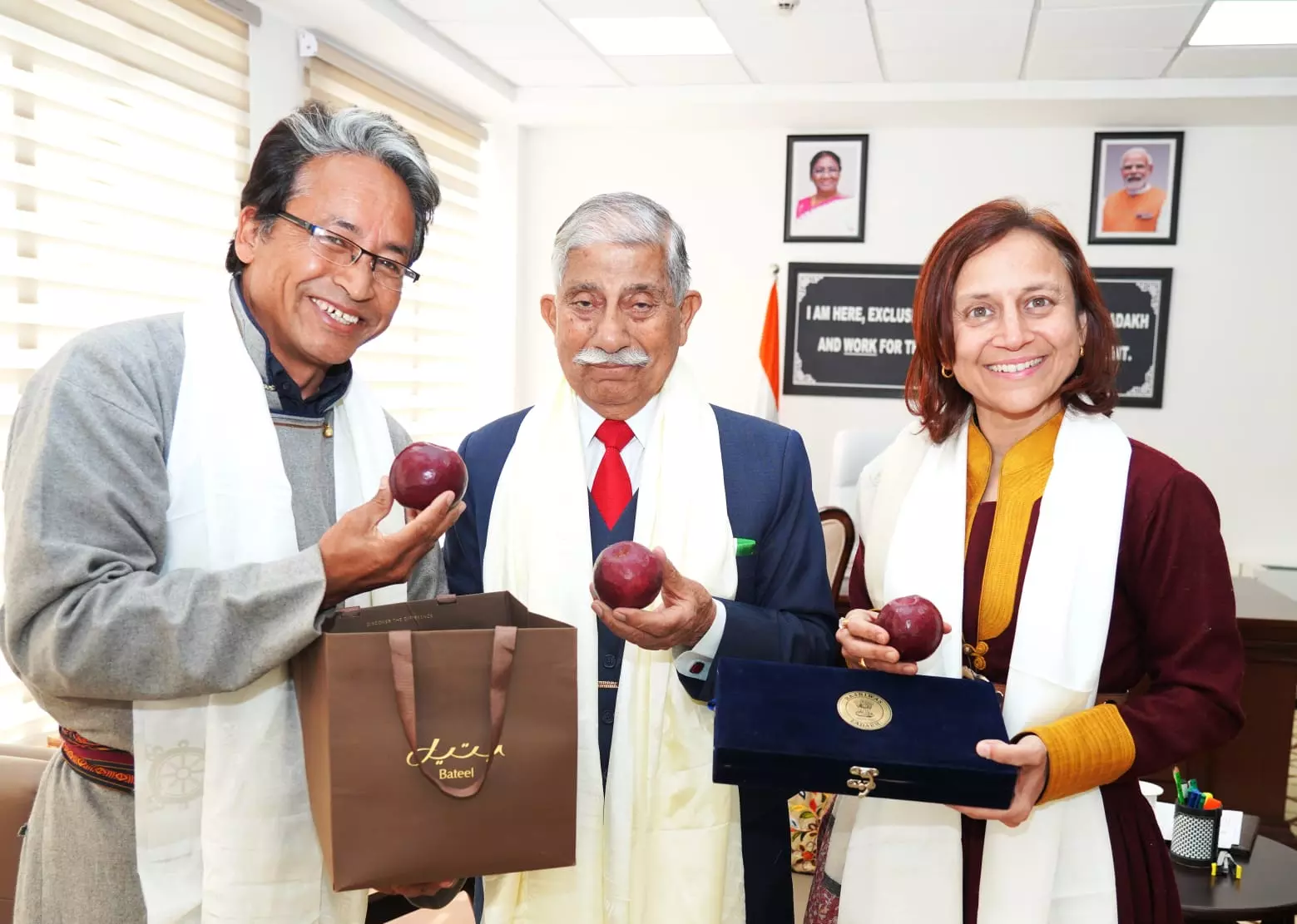
Gitanjali J Angmo and Sonam Wangchuk with HE Lt Gov of Ladakh Brig (Dr) DM Mishra
Gitanjali had a vision, a BIG Idea that was far beyond the reaches of her previous successes. She dreamed of building an institute of higher learning that would empower the marginalized mountain youth of the trans-Himalayan high-altitude cold desert of Ladakh. Her aim was to equip these young minds with the knowledge, skills and resources to become stewards of their own contexts, solving local problems sustainably with local innovations and eventually scaling up these solutions into successful and sustainable social enterprises. All of this, while living a life of dignity in harmony with nature.
But it was not an easy decision to make by any means. She left behind her thriving business ventures and luxurious life on Harrington Road, Chennai. She was driven by a deep-seated desire to create something truly revolutionary and meaningful, something that would change the world. And so, in 2017, she packed her bags and set out for a small village called Phyang, situated about 24 km’s away from Leh city, in the breathtakingly beautiful Union Territory of Ladakh.
Gitanjali had to leave behind all the comforts and conveniences of the modern world, and face the daunting challenges of living in harsh and unforgiving terrain. The cold desert of Ladakh is a place of stark beauty, but it is also a place of extreme scarcity. Oxygen levels are almost 30% lower than normal, and water is a precious resource that is hard to come by. Temperatures can drop to bone-chilling levels, making it a place where only the bravest and most resilient can survive.
Undeterred by these challenges, Gitanjali rented a small village house and began working tirelessly on her dream project – HIAL(Himalayan Institute Of Alternatives, Ladakh). This was to be no ordinary university but a place where innovation and creativity could flourish, and could be nurtured and developed. HIAL is the manifestation of her ambitious goal. She knew that by empowering the local youth, she could impact the lives of millions of people living in the Hindukush Himalayan region, directly or indirectly.
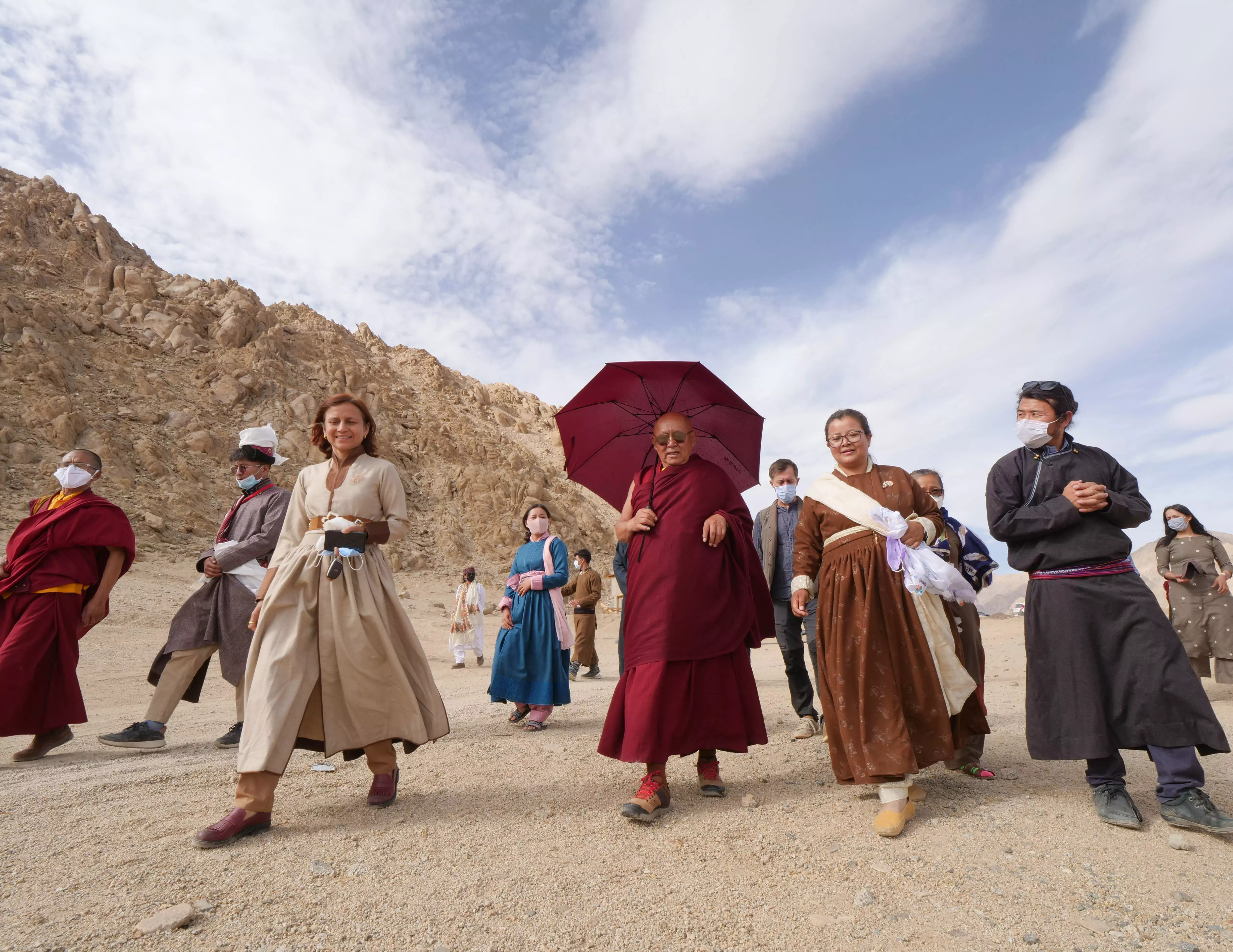
Gitanjali J Angmo showing the progress of HIAL to the Patron, HH Chetsang Rinpoche
Through HIAL, Gitanjali had set in motion a transformation that would extend far beyond the boundaries of the cold desert of Ladakh. Her vision was to create a sustainable future for the region, by cultivating a new generation of leaders who would be able to take charge of their own destinies. By providing them with access to the resources they needed, she is giving them the tools to turn their dreams into reality.
The impact of Gitanjali’s Idea is profound, not only on the youngsters of Ladakh, but also on the thousands of people who call the Hindukush Himalayas their home. Through HIAL, Gitanjali was not just building an institute of higher learning but a community of change-makers who would shape the future of the region for generations to come. Hindukush Himalayas constitute 3.5 million sq km of area and influence the lives and livelihoods of approximately 210 million people living in eight different countries. The water from these basins sustains 1.3 billion people, one-fifth of the world’s population.
On multiple occasions, Gitanjali J Angmo’s efforts have been commended, including by Sonam Wangchuk, who stated, “when she learned about the alternative education initiative in Ladakh and the potential transformational impact on higher education in India, she abandoned her corporate career and relocated to Ladakh to accelerate the establishment of HIAL. What makes her contribution even more touching is that she is offering her services pro-bono.”
In a conversation with The Logical Indian, Gitanjali recalls Rinpoche, their patron, comparing her to a Bodhisattva. He remarked that she selflessly devotes herself to Ladakh’s people, without expecting anything in return, even though she could have lived a life of luxury elsewhere.
HIAL kick-started with the HILLs fellowship project, which had a humble beginning, with living rooms transformed into classrooms and bedrooms doubling as office spaces during the day. Gitanjali started managing all services single-handedly in 2017, but the organization has grown to include about 48 full-time associates. When asked if their school can surpass the traditional schooling system with practical life learning, Gitanjali confidently responds, “Yes.” She believes they have created a system that provides a trans-disclipintrans-disciplinary experience for students, with modules designed to encourage critical thinking, creativity and innovation for a sustainable world.
HIAL’s curriculum differs greatly from the traditional education system and urges students to think beyond textbooks. Under Gitanjali’s leadership, HIAL emphasizes on 70% experiential learning and just about 30% of classroom learning. Since its inception in May 2018, HIAL has scripted numerous success stories . Under Gitanjali, the institute launched numerous courses, empowering the marginalized youth of Ladakh to take ownership of their futures and create sustainable solutions to the challenges facing their communities.
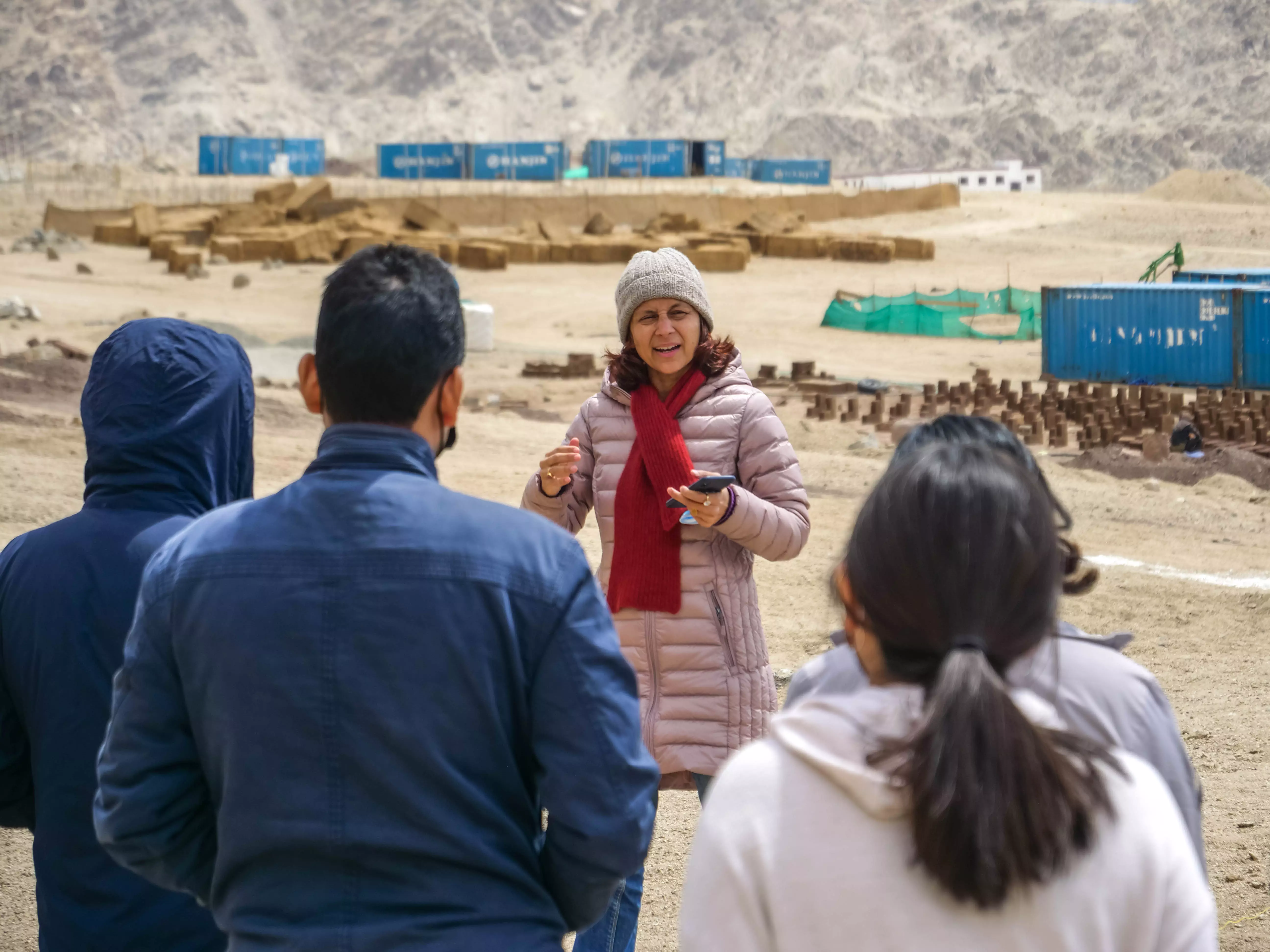
Interacting with students of HIAL, Ladakh
One of the most impressive achievements of HIAL has been the creation of artificial glaciers, which has stored an astonishing 500 million liters of water. This was a remarkable feat, given the scarcity of water in the region, and had a significant impact on the lives of the people living in the surrounding areas.
In addition, the institute worked with architecture students to build 100,000 square feet of passive solar carbon-neutral buildings. These buildings had been designed to stay at a comfortable +15 degrees Celsius, even during the harsh -20 degrees Celsius winters, without the need for any artificial heating. This was an impressive technical achievement and an example of the institute’s commitment to sustainability and the harmonious coexistence of humans and nature.
The impact of HIAL and Gitanjali’s leadership extended far beyond the borders of Ladakh. The institute’s work had caught the attention of the Indian Army, which had commissioned HIAL to build similar buildings in far-flung regions on the Indian borders. This was a testament to the institute’s expertise, the value of its work, and its potential to positively impact the lives of millions of people in the region. Gitanjali has ensured that HIAL is very future-oriented, and it addresses the critical issues in education today is transforming the youth into citizens who are sensitive to nature, selfless and committed to contributing to society, and creative in finding sustainable solutions to today’s problems like climate change.
Also Read: What Are Unhappiest Jobs In The World? 85-Yr-Old Harvard Study Finds Out
https://thelogicalindian.com/h-upload/2023/03/31/500x300_230894-untitled-design.webp
Uplifting
2023-03-31 09:16:25.0
Empowering Next Generation! Know About Gitanjali J Angmo’s Journey to Revolutionize Education In Ladakh


